10 Easiest Vegetables to Grow In Your Garden (With Pictures)
-
Pete Ortiz
- Last updated:
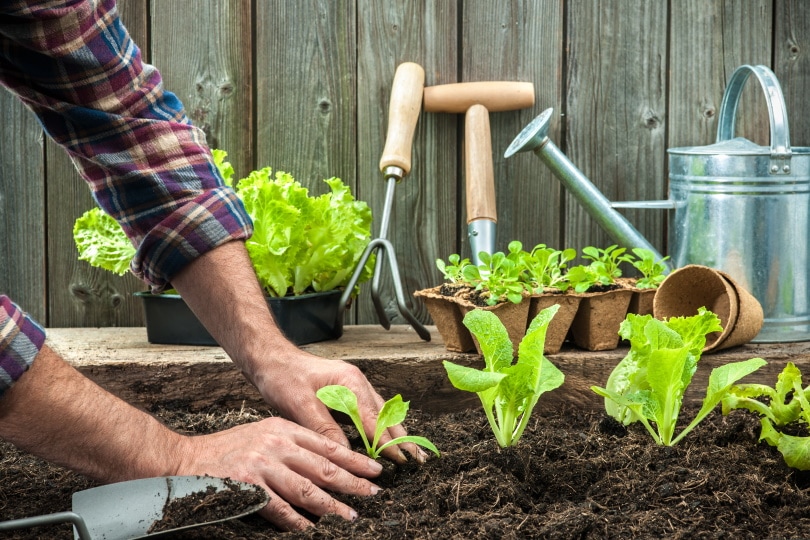
A diet rich in vegetables has the ability to regulate our blood sugar levels, prevent cancer, improve our visual system, and lower the risk of stroke and heart disease. And even if you’re not looking to live a healthy lifestyle, vegetables can drastically help reduce the cost of living.
Anyway, the point of this article is not to try to convince you to change your lifestyle. It’s to let you know that there are some vegetables that are not that difficult to grow.
For the record, this isn’t an exhaustive list, but here are 10 of the easiest vegetables to grow in your garden at home.
The 10 Easiest Veggies to Grow At Home
1. Lettuce
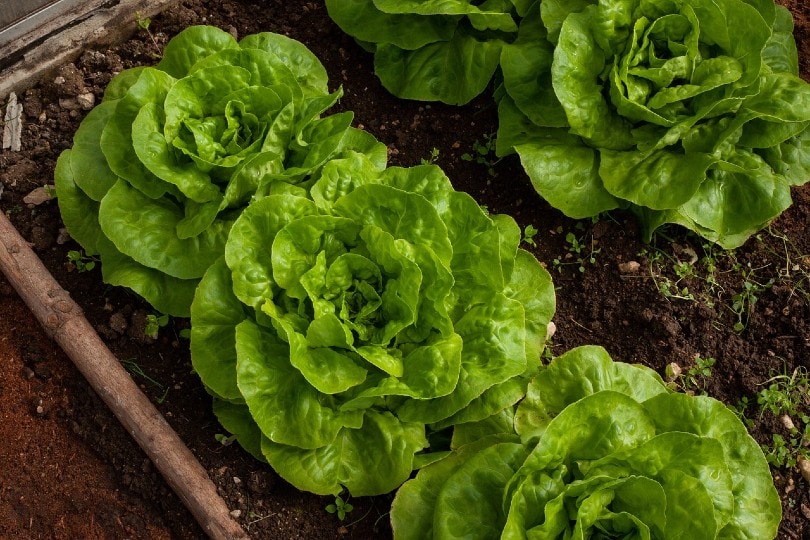
| Scientific name | Lactuca Sativa |
| Type | Annual |
| Temperature preference | 60–65 Degrees F |
We had to put lettuce at the top of this list because it’s found in almost every garden. It’s very easy to plant, can fit into small spaces, doesn’t require high-level maintenance, and is not demanding when the time comes to harvest.
Lettuce is also very healthy to eat. It’s rich in magnesium, has a high fiber content, and is also perfect for diabetics, those who have liver problems, and people who experience stomach pains from time to time. This vegetable will increase your bile flow, help regulate your blood sugar levels, and improve your intestinal health.
The only problem with growing lettuce is, you’ll need to be creative when protecting it from insects and birds.
- Easy to plant
- Requires less space
- Easy to harvest
- Makes a nutritious meal
- Low maintenance
- Attracts a lot of insects and birds
2. Zucchini
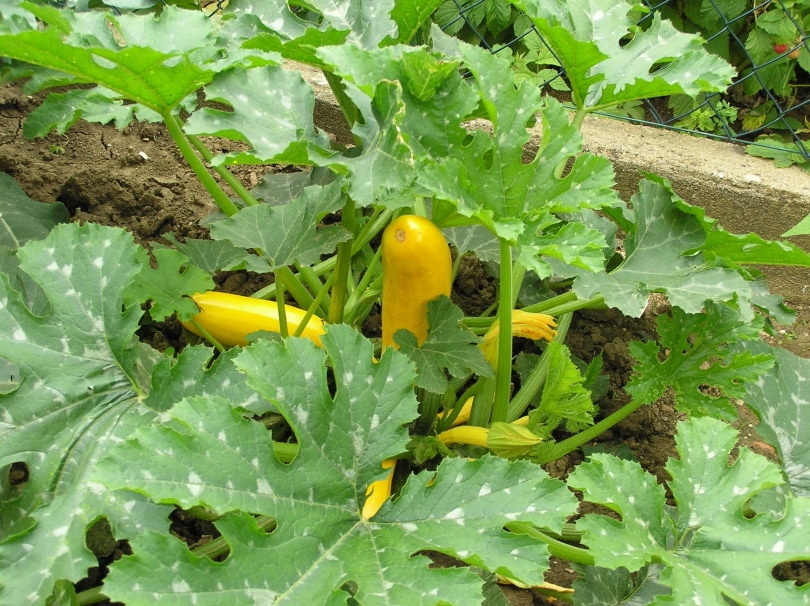
| Scientific name | Cucurbita Pepo |
| Type | Annual |
| Temperature preference | 65–75 Degrees F |
Zucchini is just as common as lettuce since it’s easy to grow and has several nutritional benefits. But there are a couple of things to consider if you’re going to plant zucchinis. And one of them is variety.
Not all types of zucchinis will do well in your backyard garden. Some of them require a larger space and a specific type of microclimate. The area should also receive at least six hours of daylight sun, and the soil has to be rich.
Timing is also another factor. You cannot plant it too early or too late. If you sow too early, they’ll be damaged by snow. And if you sow too late, chances are they won’t reach full maturity.
The good thing about zucchini is that you can grow it using the vertical gardening technique, side by side with beans and corn. In fact, they tend to do well when planted together with those two vegetables.
- Has several nutritional benefits
- Easy to grow
- Can be grown using the vertical gardening technique
- Can be planted together with corn and beans
- Timing has to be precise
3. Beets
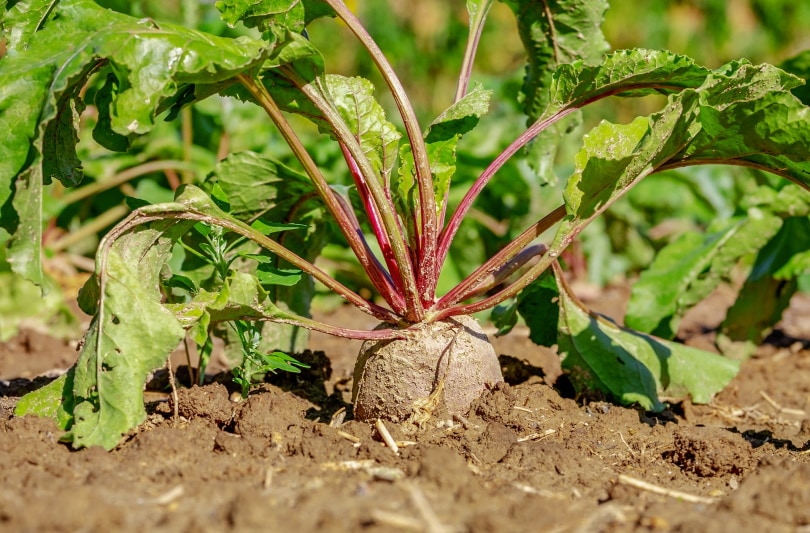
| Scientific name | Beta Vulgaris |
| Type | Biennial |
| Temperature preference | 50–70 Degrees F |
We would recommend beets to any first-time gardener out there. They are unfussy about soil type, not as demanding as many other crops, and happen to be very resilient. In addition, you’ll be getting two for the price of one, seeing as the plant provides two very different crops—the leaves and the roots.
A quick disclaimer though:
Saying that beets do well in almost all soil types doesn’t mean that you shouldn’t test your soil before planting it. You’ll only be setting yourself up for disappointment. Make sure the soil in your garden is not too acidic or too alkaline. It also has to be fertile, so you should think about mulching it with some well-rotted compost before sowing.
To grow well, beets need adequate moisture and plenty of sunlight. They’ll also require little maintenance, so we don’t think you should be concerned about investing too much of your time. You also need to remember that they don’t do well when planted near charlock, field mustard, or pole beans.
- Ideal for beginners
- Resilient
- Provides two different crops
- Little maintenance required
- Don’t like to be grown near charlock, field mustard, and pole beans
4. Swiss Chard
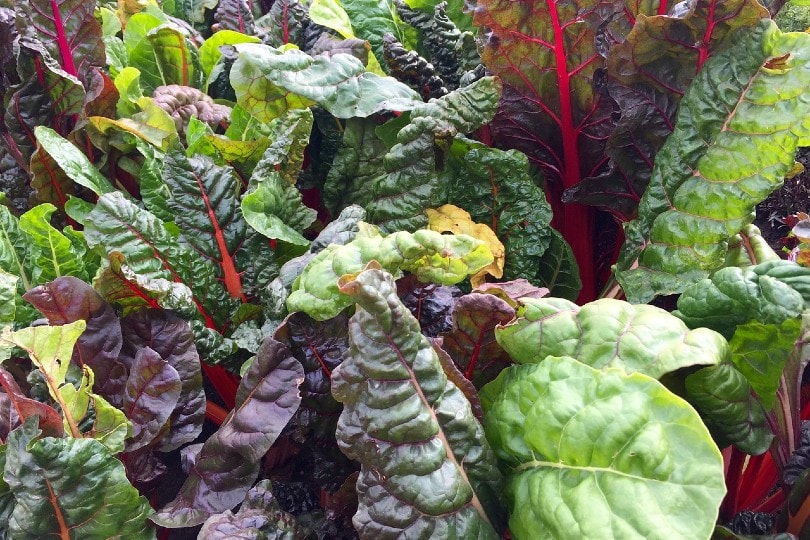
| Scientific name | Beta Vulgaris |
| Type | Biennial |
| Temperature preference | 55–80 Degrees F |
Adding beets to this list and excluding the Swiss chard is almost criminal. Chards are essentially beets, except for the fact that they come with huge leaves, have very juicy stems, and a lot of fat.
Swiss chard has always been categorized as a biennial crop. What that means is, it has a two-year lifecycle. However, when it comes to cultivating, you’ll have to treat it the same way you would annual plants. After its first season of growth, the second season will produce leaves that are unpalatable, and weirdly bitter.
The planting requirements are simple: the soil has to be fertile, the site should receive adequate sunlight, and the climate should be warm. Ensure all these things are provided and you’ll enjoy a great meal rich in vitamin A, C, and K.
- Great source of vitamin A, C, and K
- Is a biennial plant
- The second cycle produces leaves that are unpalatable
5. Kale
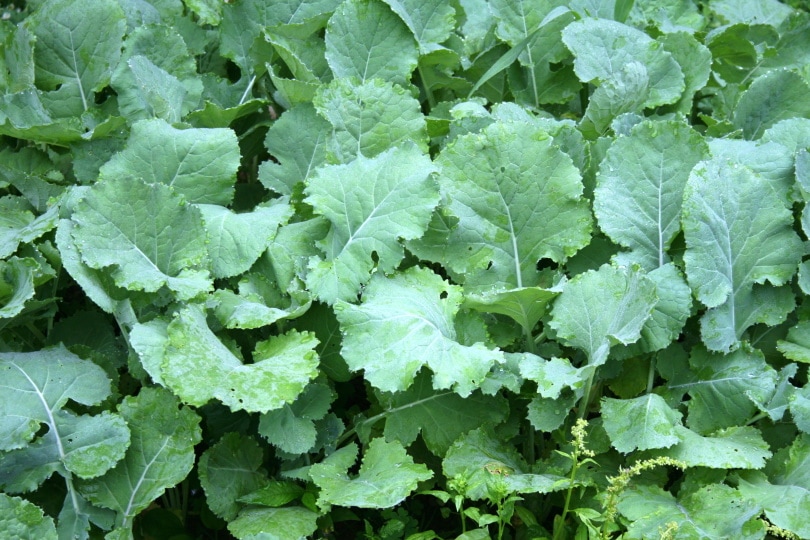
| Scientific name | Brassica Oleracea |
| Type | Biennial |
| Temperature preference | Above 10 Degrees F |
Oh, we love kale. We love kale so much because it’s not only nutritious but also tasty and versatile. This vegetable guarantees your meal will have the required amounts of essential vitamins, minerals, and low calories. That’s to say, it’s the perfect addition to any diet.
Interestingly, kale became popular during World War II. The Dig for the Victory campaign encouraged its cultivation since it could provide the human body with all the essential nutrients missing from people’s diets at the time. These nutrients were missing due to food rationing.
Kales can thrive in almost any temperature, as long as you’re not trying to grow them in the desert. What’s more, their flowers and buds are edible, and gardeners can begin harvesting the crop at various stages.
The funny thing about kale is, the more it gets hit by frost, the sweeter it becomes. It’s not too demanding if we’re talking about maintenance, but you have to find a way to keep anthracnose at bay. Also known as the Colletotrichum Higginsianum, this fungus will predispose your crops to bacterial soft rot.
- Versatile
- Nutritious
- Not too sensitive to temperature changes
- Can be harvested at different stages
- Susceptible to bacterial rot
6. Cucumbers
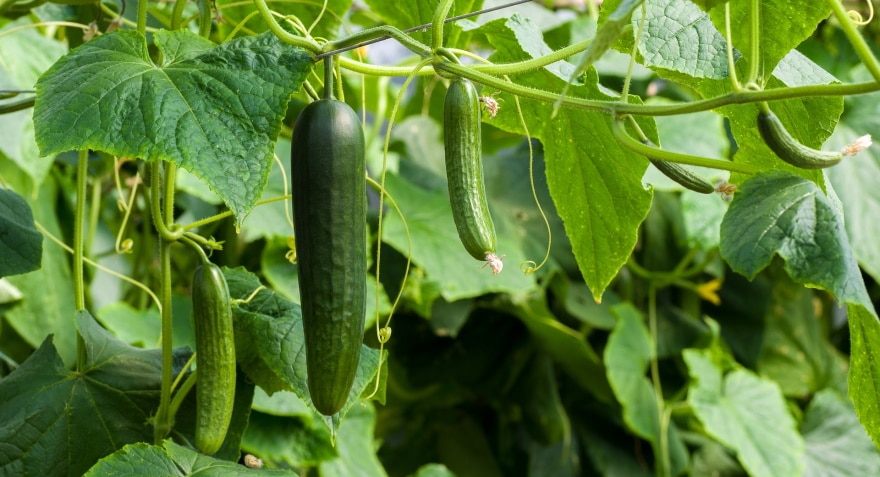
| Scientific name | Cucumis Sativus |
| Type | Annual |
| Temperature preference | 65–75 Degrees F |
With cucumber, you’ll need to prepare. You cannot just decide to plant them today on a whim and expect them to thrive. Cucumber requires the soil to be high in potassium and nitrogen.
Instead of using water, you could use milk—milk has been known to be an incredible source of potassium, as well as several other minerals that the plant could benefit from. As a solution, the milk will help create microflora around the vegetable, and hence ensure it doesn’t lack anything.
A 100ml packet of milk and 5 liters of boiled water will be sufficient. Just don’t water the cucumber plant with undiluted milk, as this will leave behind a high concentration of milk solutes. The solutes are notorious for turning the soil hypertonic, making it difficult for the plan to absorb any more moisture.
It’s safe to say that maintaining a cucumber plant is a tad bit more difficult than most garden plants.
- Easy to plant
- Provides for a nutritious meal
- Requires maintenance
- Gardeners have to prepare in advance
- Soil needs a high potassium and nitrogen content level
7. Carrots
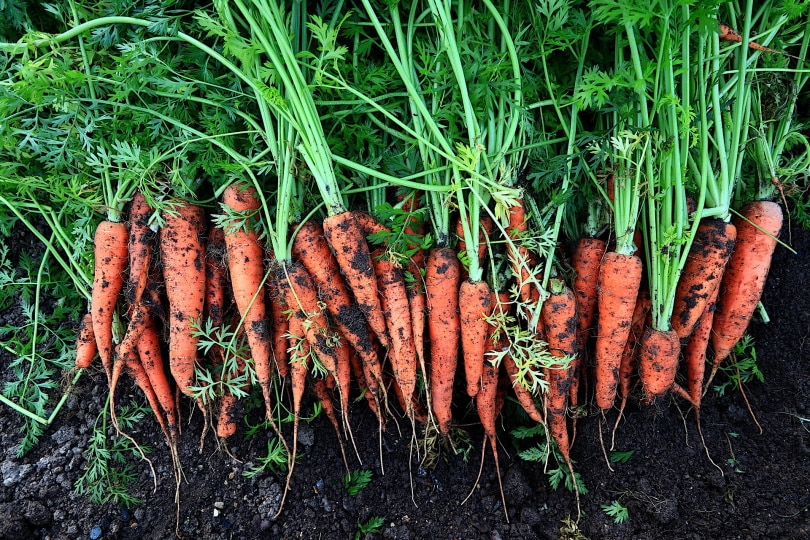
| Scientific name | Daucus Carota |
| Type | Biennial |
| Temperature preference | 55–75 Degrees F |
Assuming we were working with a spectrum, with 10 representing the easiest vegetables to grow, we would have carrots at 7. This vegetable is only easy to grow if you decide to plant it in loose, sandy soil. If you use any other type of soil, it will drive you nuts.
Carrots aren’t as affected by frost as most vegetables, so it’s okay to grow them during cooler periods. We’re sure you think that all carrots are orange, but there are white and purple colored carrots too, which are just as resistant to pests and diseases as the orange ones.
Deformed or short carrots are signs that you forgot to ensure your soil was soft, loose, and had good drainage. Overcrowding, on the other hand, is a sign you forgot to thin your carrot seedlings.
All things considered, carrots really do need a fair bit of care. You cannot just sow and forget about them.
- Aren’t affected by frost
- Pest resistant
- Less susceptible to bacterial rot
- Require a lot of maintenance
8. Radishes
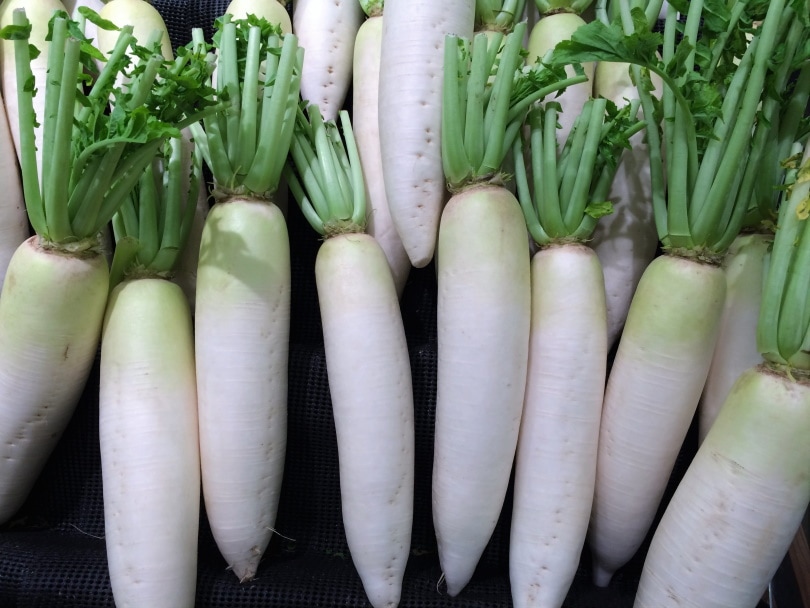
| Scientific name | Raphanus Sativus |
| Type | Annual |
| Temperature preference | 60–65 Degrees F |
Radishes are ready in as little as 24 days and don’t usually require a lot of space. While sowing the seeds, remember to place them approximately 2 inches apart. But if that’s not going to be possible, you can just sow them randomly and then thin once they sprout.
Radishes love hanging out with carrots. So when you’re sowing your carrot seeds, you could always mix them together. Because radishes sprout faster than most vegetables, they’ll keep pushing the soil, making it loose and primed for the carrots that are to sprout later on.
- Can be grown alongside carrots
- Take only days to sprout
- Ready in as little as 24 days
- Will attract bugs and insects
9. Peas
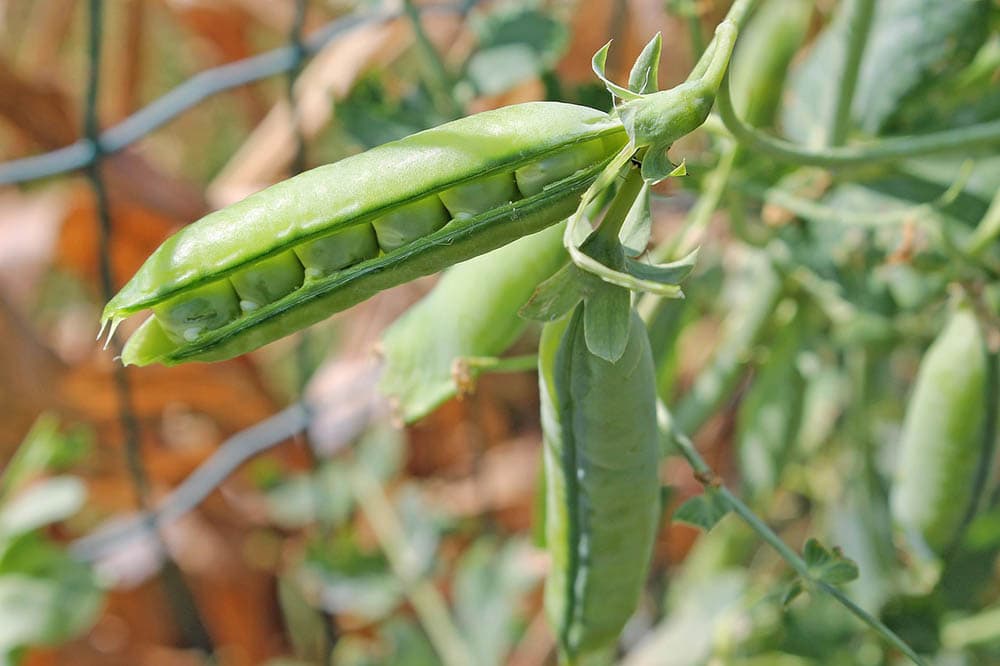
| Scientific name | isum Sativum |
| Type | Annual |
| Temperature preference | 50–70 Degrees F |
If it’s all about sowing, peas are the type of vegetables that are kid-friendly. That means they’ll give you an opportunity to bond with your kids over sowing. All you have to do is to remind them to handle the seeds with care, otherwise, the seedlings’ vigor will drop.
Concerning the soil type, they do exceptionally well in moist soils—moist but not soggy. They also don’t like summer temperatures, as those high temperatures tend to cause the plant to produce seeds early, in addition to inhibiting root growth.
- Can be grown by kids
- Not difficult to maintain
- Sensitive to temperature changes
10. Green Beans
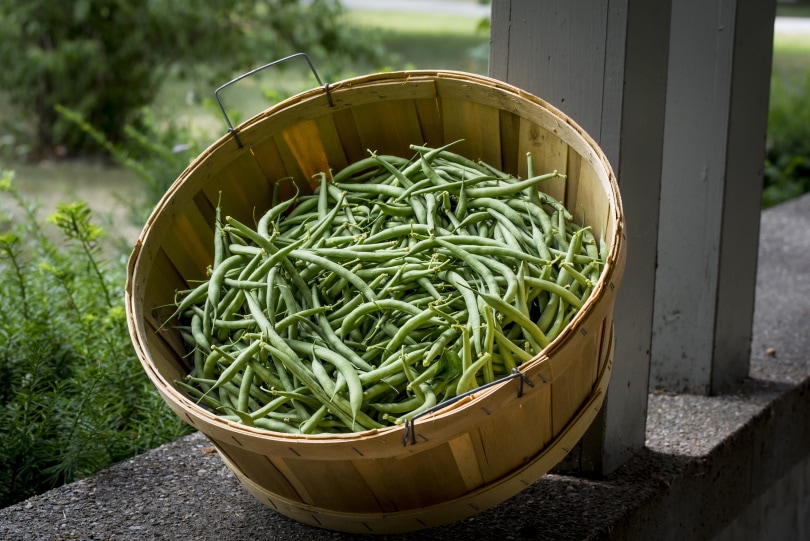
| Scientific name | Phaseolus Vulgaris |
| Type | Annual |
| Temperature preference | 65–85 Degrees F |
You honestly don’t have to worry about the nitrogen content levels in your soils if you’re thinking about planting green beans. They can tolerate poor soils, as they have the ability to fix the nitrogen disparity as they grow.
With green beans, you’ll have to take into consideration the different varieties. There’s the pole and the bush variety.
Sometimes referred to as runner beans, pole varieties are green beans that are only capable of growing tall with the help of a pole. They are not like the bush varieties that only rely on the support provided by short, bushy plants which grow closer to them.
In general, all varieties are fast-growers, require moist soil, and prefer warmer climates. Save for the snap beans, of course. They prefer cool areas.
Regrettably, they tend to be more vulnerable to various diseases compared to other pants.
- Tolerates poor soils
- Will add nitrogen in the soil
- Grows fast
- Vulnerable to plant diseases
Wrap Up
These crops are not only the most common vegetables but also the easiest to grow in any garden. It doesn’t matter if you’re an experienced gardener or someone who’s just looking for a new hobby.
We would again like to remind you that this is not an exhaustive list. We’re sure there are several other plants out there that are also easy to grow in your backyard. If you’d like to share some of them, let us know in the comments below!
Featured Image Credit: Alexander Raths, Shutterstock
Contents


